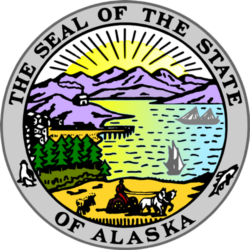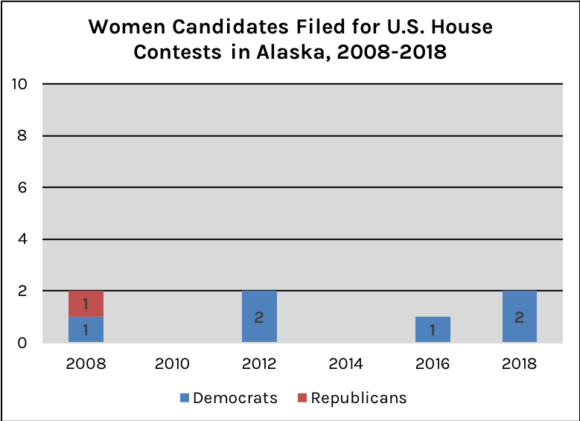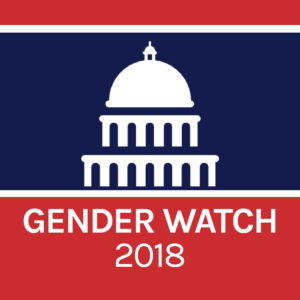
Ahead of the Alaska primary election on August 19, 2018, we outline the numbers and proportions of women who have filed as candidates for congressional and statewide office. The data below also provide points of historical comparison to give context to today’s presence and potential success of women candidates.
All data are provided from the Center for American Women and Politics, Eagleton Institute of Politics, Rutgers University. For a full list of the women candidates in Alaska primary races for congressional and statewide offices, see CAWP’s Election Watch page.
CONGRESS
Current: 1 (1R) of 3 members of the Alaska congressional delegation (33.3%)
Filed: 2 (2D)
Percent of all Filed Congressional Candidates (D/R): 28.6% (2 of 7)
SENATE
Current: 1 of 2 senators
- Incumbent U.S. Senator Lisa Murkowski (R), the first and only woman to serve in Congress from Alaska, is not up for re-election this year.
HOUSE
Current: 0 of 1 representative (0%)
- No woman has ever served in the U.S. House from Alaska.
Filed: 2 (2D)
- 2 Democratic women are running to challenge the Republican incumbent of Alaska’s at-large district.
Districts with Women Candidates: 1 of 1
Percent of all Filed House Candidates (D/R): 28.6% (2 of 7)
Percent of all Filed Democratic House Candidates: 50% (2 of 4)
Percent of all Filed Republican House Candidates: 0% (0 of 3)

Recent history: The number of women who filed for major party candidacy for the U.S. House in Alaska in 2018 is not a record high. Two women also ran for Alaska’s at-large congressional seat in both 2008 and 2012.
GOVERNOR
Current: 0
One woman has served as governor of Alaska: Sarah Palin (R) served from 2007 to 2009.
Filed: 0
Percent of all Filed Gubernatorial Candidates (D/R): 0% (0 of 9)*
Percent of all Filed Democratic Gubernatorial Candidates: 0% (0 of 1)
Percent of all Filed Republican Gubernatorial Candidates: 0% (0 of 7)
Percent of all Independent Gubernatorial Candidates: 0% (0 of 1)
*Includes Incumbent Governor Bill Walker, who is an Independent.
LIEUTENANT GOVERNOR
Current: 0
Filed: 4 (1D, 3R)
- All 4 (1D, 3R) women candidates for lieutenant governor are running to challenge the incumbent Independent lieutenant governor.
Percent of all Filed Candidates for Lieutenant Governor (D/R): 50% (4 of 8)*
Percent of all Filed Democratic Candidates for Lieutenant Governor: 100% (1 of 1)
Percent of all Filed Republican Candidates for Lieutenant Governor: 50% (3 of 6)
Percent of all Independent Candidates for Lieutenant Governor: 0% (0 of 1)
*Includes Incumbent Lieutenant Governor Byron Mallot, who is an Independent.


 From March to December 2018, the
From March to December 2018, the 